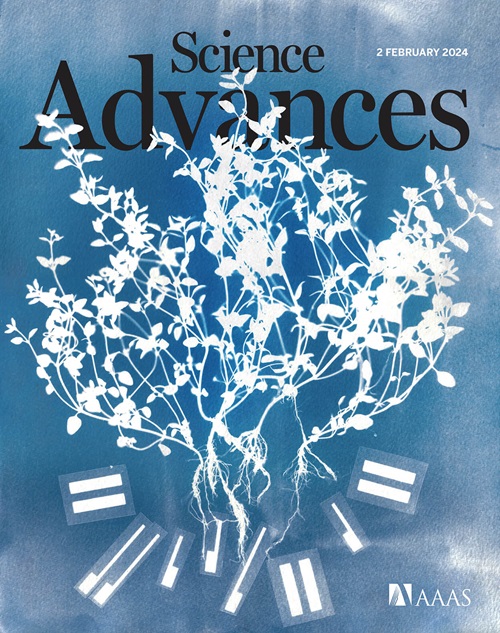Ligand spin immobilization in metal-organic frameworks enables high-performance chemispintronic detection of radical gas molecules
IF 11.7
1区 综合性期刊
Q1 MULTIDISCIPLINARY SCIENCES
引用次数: 0
Abstract
The precise quantification of gaseous radicals in exhaled breath, such as fractional exhaled nitric oxide, serves as an invaluable noninvasive clinical diagnosis particularly in discerning various respiratory disorders. To date, the development of high-performance nitric oxide sensors compatible to modern electronic devices remains fundamentally challenging. We report that metal-organic frameworks (MOFs) with ligand spin immobilization demonstrate superior chemispintronic sensitivity and selectivity toward nitric oxide. Tetrathiafulvalene radical cations (TTF·+) within the MOF lattice considerably enhance the nitric oxide recognition via spin exchange interactions, leading to a five–order of magnitude reduction in the limit of detection (LOD), as compared to volatile organic compounds (VOCs) via carrier-doping mechanism. Record-low LOD of 0.12 parts per billion was achieved in M-TTF-spin (M = cobalt, zinc, and cadmium) MOFs, which also demonstrates exceptional selectivity over typical nitrogen oxides (NOx) and VOCs. This work opens up a distinct sensing platform for radical-like analytes through strategic design of spin-immobilized molecular functional motifs toward the spintronic device configurations.

金属有机框架中的配体自旋固定化实现了对自由基气体分子的高效化学电子检测
呼气中气体自由基的精确定量,如呼出一氧化氮的分数,作为一种宝贵的无创临床诊断,特别是在识别各种呼吸系统疾病方面。迄今为止,开发与现代电子设备兼容的高性能一氧化氮传感器仍然具有根本性的挑战性。我们报道了具有配体自旋固定的金属有机框架(MOFs)对一氧化氮表现出优异的化学电子敏感性和选择性。与通过载流子掺杂机制的挥发性有机化合物(VOCs)相比,MOF晶格内的四噻吩烯自由基阳离子(TTF·+)通过自旋交换相互作用显著增强了对一氧化氮的识别,导致检测限(LOD)降低了5个数量级。在M- ttf自旋(M =钴、锌和镉)mof中,LOD达到了创纪录的0.12 ppm,这也证明了对典型氮氧化物(NOx)和挥发性有机化合物的卓越选择性。这项工作通过对自旋电子器件配置的自旋固定分子功能基序的策略设计,为类自由基分析物开辟了一个独特的传感平台。
本文章由计算机程序翻译,如有差异,请以英文原文为准。
求助全文
约1分钟内获得全文
求助全文
来源期刊

Science Advances
综合性期刊-综合性期刊
CiteScore
21.40
自引率
1.50%
发文量
1937
审稿时长
29 weeks
期刊介绍:
Science Advances, an open-access journal by AAAS, publishes impactful research in diverse scientific areas. It aims for fair, fast, and expert peer review, providing freely accessible research to readers. Led by distinguished scientists, the journal supports AAAS's mission by extending Science magazine's capacity to identify and promote significant advances. Evolving digital publishing technologies play a crucial role in advancing AAAS's global mission for science communication and benefitting humankind.
 求助内容:
求助内容: 应助结果提醒方式:
应助结果提醒方式:


